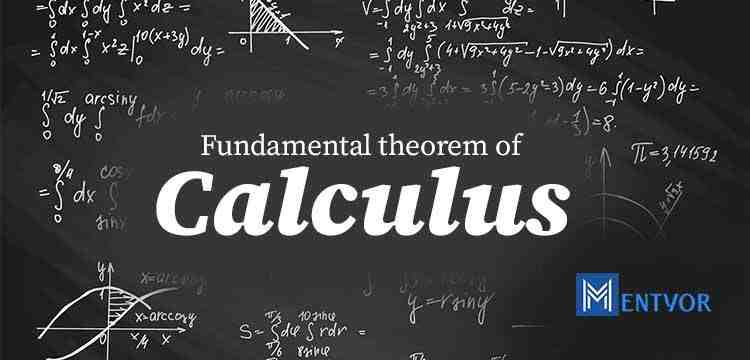What is Calculus? The field of mathematics that determines the rate of change is known as calculus. Before the advent of calculus, all arithmetic was static, meaning it could only be used to compute unmoving things. The cosmos, on the other hand, is always changing and evolving. From stars in space to elementary particles or cells in the body, there are no objects in the cosmos that are always at rest. In truth, everything in the cosmos is in perpetual motion. Calculus enabled scientists to deduce how particles, stars, and matter move and change in perfect synchrony.
Calculus Definition:
Calculus is a field of mathematics that examines continuous change in the same way that geometry studies shape and algebra studies arithmetic operations in general. It is sometimes known as infinitesimal calculus or “calculus of infinitesimals.”
Calculus is a mathematical concept that is commonly utilized in mathematical models to get optimal solutions and so aids in comprehending the changes in the values of a function.
Calculus is employed in a variety of disciplines that you may not expect to use its principles. Calculus is also employed in a wide range of applications, including space exploration, calculating how pharmaceuticals interact with the body, and even designing safer architecture.
Calculus is broadly divided into two types:
- Differential calculus
- Integral calculus
- The rate of change of a quantity is basically determined by Differential calculus. It investigates the rates at which slopes and curves change.
The determination of the rate of change of functions in relation to the variables with the help of derivatives and differentials is done through differential calculus.The derivative is the slope of a line on a graph. The increase over the course determines the slope of a line.
- On the other hand, when the rate of change is known, integral calculus is related to finding the quantity. The slopes of tangent lines and velocities are discussed in this branch. Differential calculus is concerned with the curve itself, whereas integral calculus is concerned with the space or area beneath the curve. For objects like lengths, areas, and volumes, integral calculus is utilised to compute overall size or value.
Read this for mathematics help:
- Maths Synonymous To Dilemma For You? Read This, Solve Your Problem – 4 min read
- Effective Ways To Tackle Math Assignment
- Is Maths Homework Is Pulling You Behind? Grab The Best Resource
Who invented calculus? | What is Calculus ?

Two people, Isaac Newton and Gottfried Leibniz, independently created the foundations of calculus, and they are widely awarded credit for their discovery. Despite the fact that they were both involved in its design, they approached the key themes in completely different ways.
While Newton viewed variables as changing over time, Leibniz saw the variables x and y as ranging across infinitely close values. He introduced dx and dy as disparities between these sequences’ successive values. The tangent is given by dy/dx, however, Leibniz did not utilise it as a defining characteristic. Newton, on the other hand, calculated the tangent using the finite velocity values x’ and y’.
Newton was the first to invent calculus and apply it to the study of physical systems. Leibniz invented the notations used in calculus on his own. To put it another way, whereas fundamental arithmetic employs operations like plus, minus, times, and division to compute rates of change, calculus uses operations that use functions and integrals.
Of course, no one among the two thought in the terms of functions; inspite, they thought in terms of graphs. Newton’s calculus was geometrical, but Leibniz’s was analytical.
These approaches allowed the two discoverers along with other mathematicians to calculate things like the precise slope of a curve at any point.
What is calculus used for? | What is calculus

Calculus is utilized for optimization, summation, and trend prediction through temporal modeling. For example, calculus might be used by a factory to reduce manufacturing costs. It is even used by meteorologists to forecast weather patterns, for example.
Calculus in the Workplace.
Calculus is mostly utilized in business for optimization. Profit maximization, cost minimization, and production maximization or minimization are all examples of this. Calculus may also be used to determine an interest-bearing account’s rate of change in cost or marginal revenue.
Calculus In Engineering.
Calculus is mostly used in engineering for optimization and summation. The classic Navier-Stokes equations, which explain the physical processes caused by airplanes, are included in this. Aerospace engineers will benefit greatly from these equations.
Guidance in mechanical studies : Best Guidance In Your Mechanical Subjects? – 5 Min read
Calculus in Physics.
Calculus has several applications in physics. This is because time is almost always a factor in physics, and modeling change is Calculus’ fundamental role. Kinematics, electrodynamics, fluid dynamics, and other topics are covered in the applications.
Read more about physics assignment : Physics assignment Help Tips To Overcome The Fear
Calculus in Chemistry.
Calculus is used in chemistry to simulate processes, calculate radioactive decay rates, transmit heat, and much more. Thermodynamics, electrochemistry, analytical chemistry, and quantum chemistry are all included.
Uses of calculus in computer science.
Calculus is used in computer science to construct graphics and physics engines for video games, as well as 3D visualizations for simulations. Calculus is also required by a large number of software systems.
Read out blogs about best universities:
- Best University in Oklahoma City for 2022
- 50 Best Universities in Pennsylvania
- Washington University in St. Louis | 30 Best Universities in St. Louis
Fundamental theorem of calculus | What is calculus

Differentiating (calculating the gradient) and integrating (calculating the slope) are linked by the fundamental theorem of calculus (calculating the area under the curve). Apart from a fixed value that relies on where one starts computing area, the two processes are inverses of each other.
The first part of the theorem, known as the first fundamental theorem of calculus, states that by integrating f with a variable bound of integration, one of the antiderivatives (also known as an indefinite integral) of a function f, say F, may be obtained. For continuous functions, this implies the presence of antiderivatives.
f(x) dx = F (b) – F (a).
The integral of a function f over a given interval may be computed using any of its infinitely numerous antiderivatives, such as F, according to the second portion of the theorem, often known as the second fundamental theorem of calculus. This aspect of the theorem is useful in practice since it avoids using numerical integration to compute integrals by explicitly calculating the antiderivative of a function via symbolic integration.
F(b)- F(a) = ∫ab f(x) dx
Calculus bridge
Suspension bridges are one of the most common forms of bridges built across the globe. Long horizontal decks are hung below suspension cables on vertical rods or hangers in such bridges. If the weight of the deck and the automobiles being supported is negligible, the suspension bridge’s main cables will take the shape of parabolas (which closely resemble that of catenaries, i.e., the shapes of the free cables before the hangers are attached).
When the entire weight of the load, the cable, and the roadway per horizontal foot is constant, calculus allows us to compute the geometry of the bridge cable.
The cable is supposed to be inelastic and fully flexible (i.e., it bends without resistance) (i.e., it does not stretch or contract).
Calculus calculator
Calculus Calculator is a free online application that displays the Laplace transform of a particular function to make people’s lives simpler. Calculate quicker with the calculus calculator tool, which displays the transformation of a given function in a fraction of a second.


 WhatsApp
WhatsApp